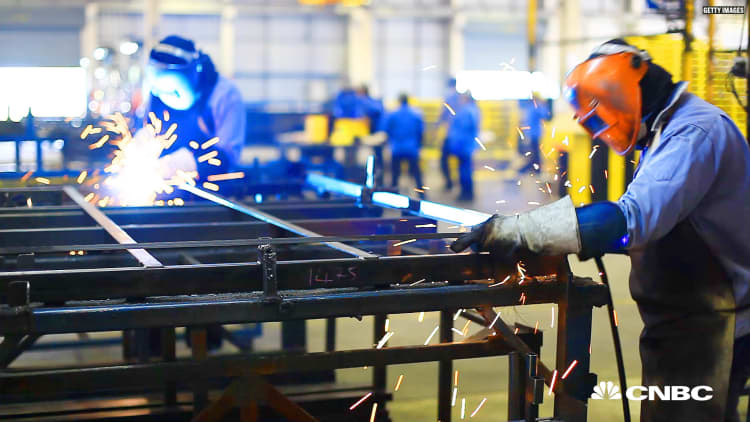The definition of "middle class" can vary wildly depending on who you ask. For some, it's defined by certain attributes: If you're hardworking, thrifty and humble, for example, you're middle-class. For others, it means earning a substantial salary but not so much that you'd be considered rich.
That's according to new data from Northwestern Mutual's 2018 Planning & Progress Study, which found that 68 percent of Americans consider themselves middle-class, down 2 percent from last year. However, because of the fuzziness of the definition, far more Americans consider themselves middle-class than technically qualify based on income.
In reality, the middle class now makes up just over 50 percent of the total U.S. population, according to a recent report from Pew Research Center, which used 2016 data. That's compared to 61 percent in 1971.
Between 1971 and 2011, the share of adults in the middle class fell by 10 percent — but since 2011, Pew reports, the middle class has remained relatively stable instead of continuing to shrink.
Pew defines the middle class as those whose annual household income is two-thirds to double the national median, which was $57,617 as of 2016. By that definition, a middle-income three-person household earns about $45,000 to $135,000. If you're single, a salary of around $26,000 to $78,000 qualifies you as middle-income.
Northwestern Mutual's survey participants were nearly unanimous in saying that "middle-class" means you must make a certain amount of money, but the amount they said you need to qualify is slightly off from the official numbers. Just over 50 percent said that earning an annual salary of between $50,000 and $99,999 qualifies a household as middle-class.
Another 20 percent say the middle class is composed of those earning between $100,000 and $499,999. As seen in the chart above, though, earning an annual income above $135,000 puts a three-person family among the 19 percent of American households that are upper-class. (The remaining 29 percent of American adults are part of the lower class.)
And, Pew notes, the middle class isn't close to catching up to the wealth of the upper class. In fact, the wealth gap between these two groups is expanding. Nearly 40 percent of survey respondents said that moving from middle- to upper-class is the least likely kind of class mobility that could occur today.
"Although the wealth of upper-income families has more than recovered from the losses experienced during the Great Recession, the wealth of lower- and middle-income families in 2016 was comparable to 1989 levels," Pew reports. "Thus, even as the American middle class appears not to be shrinking (for now), it continues to fall further behind upper-income households financially, mirroring the long-running rise in income inequality in the U.S. overall."
Don't miss: The startling amount of money millennial men say they need to earn to be happy
Like this story? Subscribe to CNBC Make It on YouTube!



